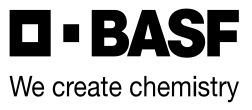Nodulator CP SCG
Solid core granular formulation for improved flowability in a high-performance inoculant that delivers increased yield potential in chickpeas.
- Rhizobial strain selected for nodulation effectiveness specifically in Chickpea crops.
- Excellent performance under stressed planting conditions.
- Technologically advanced granular carrier for rhizobia in a low dust formulation that is resistant to crumbling.
- An easy-flowing granular inoculant formulation for convenient application in the furrow at seeding.
Labels & SDS
5 AVAILABLE
Labels & SDS
Benefits of Nodulator CP SCG
- Nodulator CP SCG inoculant contains Bradyrhizobium sp. (Cicer), a natural microorganism that is beneficial to chickpea plants.
- The rhizobia help to increase nodulation resulting in increased fixation of nitrogen for higher yield and protein potential.
- This product is guaranteed to contain a minimum of 8 x 107 viable cells of Bradyrhizobium sp. (Cicer) per gram.
Research shows that chickpea inoculants promote:
- Greater plant vigour
- Greater root biomass
- More nitrogen-fixing nodules
- Higher yield potential
Product Info & Application Guide
Application Tips
- Remove any unused granules from the hopper box at the end of each day’s planting.
- Do not allow granules to sit in hopper overnight.
- Environmental conditions may affect flowability of the product. Regularly check metering system to ensure proper flow.
- Avoid prolonged inhalation of dust. Use of a dust mask when handling is recommended.
- Store granular inoculant in a cool (10° to 15°C, or 50° to 60°F) dry place and away from herbicides, pesticides and bulk fertilizers.
- Store bags flat and keep off the floor (i.e. on a pallet) to avoid direct contact with cold, damp surfaces.
- Use before the expiration date.
- Apply granular inoculant directly to the furrow. This product must not be applied at a depth that is less than the planting depth of the seed.
- Do not mix granular inoculant with granular herbicides or fertilizers during planting.
This granular inoculant contains living organisms and requires a relatively high moisture content compared to granular herbicides and insecticides. To optimize flow (especially under humid conditions) it is suggested to fill large compartments to no more than 50 percent capacity.
When to Apply
For optimal results granules should be applied directly below the seed, in furrow.
| Crop | Treatment |
|---|---|
| Chickpeas | applied directly in furrow |
How Much to Apply
One bag contains 22.6 kg (50 lb) enough to treat 4.0 ha (10 ac).
Apply granules at a rate of 5.6 kg/ha (5.0 lb/ac). For equipment calibration purposes refer to the following table indicating row spacing versus application rate.
Row Spacing |
Application |
|---|---|
18 cm (7 in) |
9.9 g/100m (9.0 g/100 yards) |
20 cm (8 in) |
11.2 g/100m (10.2 g/100 yards) |
23 cm (9 in) |
12.9 g/100m (11.8 g/100 yards) |
25 cm (10 in) |
14 g/100m (12.8 g/100 yards) |
28 cm (11 in) |
15.6 g/100m (14.3 g/100 yards) |
30 cm (12 in) |
16.8 g/100m (15.4 g/100 yards) |
36 cm (14 in) |
20.1 g/100m (18.4 g/100 yards) |
41 cm (16 in) |
22.9 g/100m (20.9 g/100 yards) |
Equipment Calibration
Solid core granular inoculant is similar in particle size to some herbicide granules with a mean particle size distribution between 0.6 and 1.7 mm (92%), when submitted to standard Tyler Mesh particle size calibration, and a bulk density of 0.94 grams per cubic centimetre (56 pounds per cubic foot).
Directions for use
Prior to filling tank
- Check tank seals on each compartment along with all metering components for signs of cracks and wear. Replace cracked or worn parts.
- Ensure that inoculant bags and tank walls are dry prior to starting filling.
- Run fans at the beginning of each day as a precaution to dry any condensation that may have accumulated overnight. Granular inoculants require a dedicated tank to ensure proper rate application.
- Before filling, ensure that the screen at the top of the tank is in place.
- Wear respiratory protection if ventilation is inadequate or if dust generation is anticipated.
Filling the tank
- Use loading auger to fill tank and screens provided by equipment manufacturer.
- To optimize flow (especially under humid conditions), it is suggested to only fill large compartments to no more than 50% capacity.
- Apply granular inoculant directly in furrow at the specified rate. The product must not be applied at a depth that is less than the planting depth of the seed.
- Do not mix granular inoculant with granular pesticides or fertilizers during planting.
FAQ
What's the difference between a solid core granular formulation (SCG) and a peat granular formulation?
SCG formulation has technically advanced delivery of the rhizobia through a multi- layered solid core granule, which allows the following:
- Most ideal “housing” for rhizobia
- Maximum survivability
- Increased durability to withstand tough conditions in dry or very wet soils
- More uniform size
- Dust-free and greater ease of use
- Enhanced placement accuracy
In a peat granular formulation, the rhizobia are placed on the surface of the peat granule, which is exposed to environmental factors such as wind, temperature, humidity and other conditions that can affect the survivability and effectiveness of the rhizobia.
Why do I have to inoculate every year?
Inoculating every year provides “affordable” nitrogen (N) helps ensure that rhizobia populations are acceptable for effective nodulation. Soybean rhizobia are not naturally occurring in western Canadian soils. Remaining populations from previous crop years may become inefficient over time. Wet, cool soil conditions can have a large impact on nodulation. Effective inoculation leads to more uniform/stronger plant growth and maximizes total yield potential (including seed protein/ac). Using an inoculant also provides beneficial aspects with additional benefits derived from added non-rhizobial “biologically-derived” technologies.


